Apple orchards are one of the most popular and profitable fruit crops in the world. However, they also require careful management of water resources to ensure optimal growth and yield. Irrigation is a key factor that affects apple quality, quantity, and sustainability.
In this blog post, we will discuss some of the best practices and techniques for apple orchard irrigation, based on scientific research and practical experience.
Why is irrigation important for apple orchards?
Irrigation is essential for apple orchards for several reasons:
- providing water for photosynthesis, transpiration, and nutrient uptake by the roots.
- regulating soil temperature and moisture, which affect root growth and function.
- preventing water stress, which can reduce fruit size, color, sugar content, and firmness.
- reducing the risk of drought, frost damage, pest infestation, and disease outbreak.
- enhancing fruit quality and shelf life by maintaining adequate water potential in the cells.
How much water do apple trees need?

The amount of water that apple trees need depends on various factors, such as:
- The climate and weather conditions of the region.
- The soil type and texture of the orchard.
- The cultivar and rootstock of the apple trees.
- The age and size of the trees.
- The stage and intensity of fruit development.
A general rule of thumb is that apple trees need about 1 inch (2.5 cm) of water per week during the growing season. However, this may vary depending on the specific conditions of each orchard. Therefore, it is important to monitor soil moisture and plant water status regularly and adjust irrigation accordingly.
What are some methods of irrigation for apple orchards
There are several methods of irrigation for apple orchards, each with its own advantages and disadvantages. Some of the most common ones are:
- Surface irrigation: This involves applying water to the soil surface through furrows, basins, or borders. This method is simple, cheap, and suitable for flat or gently sloping lands. However, it also has some drawbacks, such as high water loss due to evaporation and runoff, low water use efficiency, uneven water distribution, soil erosion, weed growth, and salinity problems.

- Sprinkler irrigation: This involves spraying water over the canopy or under the trees through sprinklers or micro-sprinklers. This method is flexible, efficient, and uniform in water application. It can also provide frost protection and cooling for the trees. However, it also has some disadvantages, such as high energy cost, high maintenance requirement, high risk of disease infection due to wetting of leaves and fruits, and potential damage to flowers and fruits by water droplets.
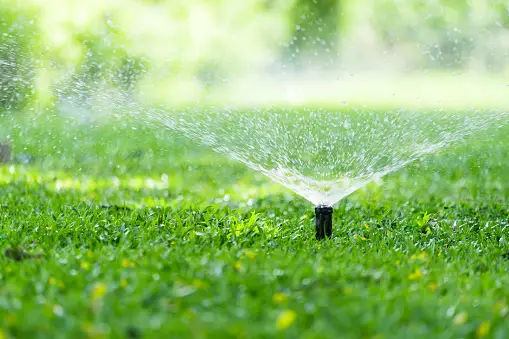
- Drip irrigation: This involves delivering water directly to the root zone through emitters or drippers. This method is precise, and economical, and conserves water by minimizing evaporation and runoff. It can also improve soil structure and fertility by reducing leaching and salinization. However, it also has some challenges, such as high initial investment cost, high technical skill requirements, high susceptibility to clogging and damage by rodents or insects, and difficulty in applying fertilizers or pesticides through the system.
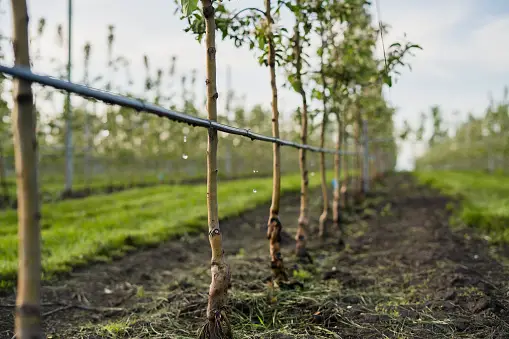
What are some best practices for apple orchard irrigation?
Regardless of the method of irrigation used, some best practices for apple orchard irrigation are:
- Plan ahead: Before planting an apple orchard, conduct a thorough site analysis to determine the soil characteristics, water availability and quality, topography, climate, and crop requirements. Based on these factors, choose an appropriate irrigation system that suits your needs and budget.
- Schedule wisely: Use a combination of soil moisture sensors (such as tensiometers or capacitance probes), plant indicators (such as leaf wilting or stem water potential), weather data (such as evapotranspiration or rainfall), and crop models (such as FAO-56 or Penman-Monteith) to determine when and how much to irrigate your apple trees. Avoid over-irrigation or under-irrigation that can harm your trees and reduce your yield.
- Maintain properly: Regularly inspect your irrigation system for leaks, clogs, breaks, or malfunctions. Clean your filters, valves, pipes, and emitters.
Timing of Irrigation
The timing of irrigation is crucial for apple orchard health. Early morning is the best time to irrigate apple orchards because it minimizes the risk of disease and maximizes water uptake by the trees. Avoid irrigating during the hottest part of the day, as this can lead to water waste and poor water uptake by the trees. Nighttime irrigation should also be avoided as it can increase the risk of disease.
Managing Water Quality
The quality of water used for irrigation can have a significant impact on the health of apple trees. Water that is too high in salinity can lead to reduced growth and fruit quality, while water that is too low in nutrients can lead to nutrient deficiencies. It’s essential to test the quality of your irrigation water regularly and make adjustments as necessary.
Final Thoughts
Effective irrigation is critical for the health and productivity of apple orchards. By assessing water needs, choosing appropriate irrigation methods, timing irrigation correctly, and managing water quality, you can optimize the growth and development of your apple trees. Be sure to consult with local experts for guidance on the best irrigation practices for your specific orchard and crop management and to ensure that you have a healthy and productive apple orchard for years to come.
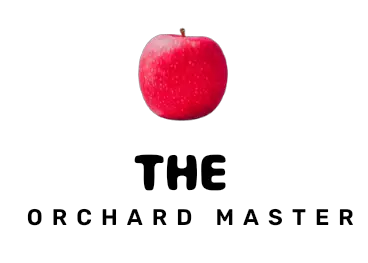
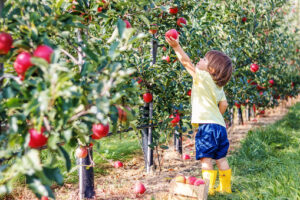
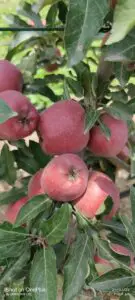
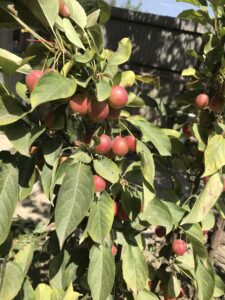
Pingback: How to Setup Healthy and Productive Apple Orchard - The Orchard Master
Pingback: The Social and economic impact of apple production - The Orchard Master
Pingback: 5 fascinating Stages of Apple Development from Blossom to Harvest - The Orchard Master
Pingback: Everything we know About Lenticel Blotch in Apples - The Orchard Master
Pingback: Rainfall and its effect on Apple trees - The Orchard Master